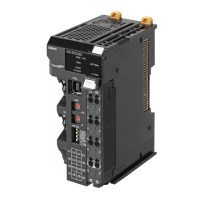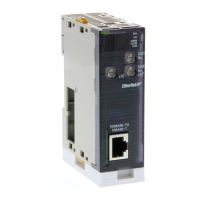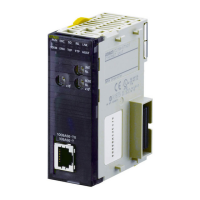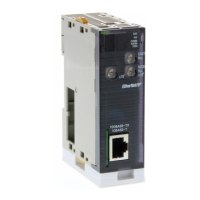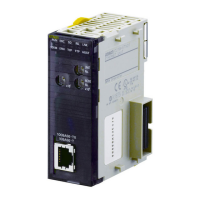33
Network Configuration Section 2-2
http://www.odva.org/
DeviceNet Cables for
Moving Applications
There are DeviceNet cables available for special applications such as moving
equipment. Several companies manufacture DeviceNet cables for moving
applications and their contact information is available at the home page of the
ODVA.
http://www.odva.org/
2-2-2 Trunk Lines and Branch Lines
Description of Trunk and
Branch Lines
The DeviceNet network is made up of a trunk line and branch lines. The trunk
line is the main line in the network and it is terminated at both ends by Termi-
nating Resistors.
Thick, thin, and flat cable can be used for both trunk and branch lines.
There is no limit on the number of nodes that can be connected on a branch
line, although the total number of node in the network is limited. Also, there is
no limit on the number of sub-branches that can be drawn from a branch line.
These features allow branches to extend from the trunk line like the branches
of a tree, although the length of branches and total branch line length cannot
be too long.
Branch Line Length
Branch lines can be up to 6 m long.
The branch line length is the distance from the point in the trunk line where
the original branch was made to the end of the branch. (The branch line
length is not just the distance between T-branch Taps or the distance from a T-
branch Tap on the branch line to a node; it is the total distance from the trunk
line to the end of the branch.)
The branch line length is limited to 6 m in all cases.
Even if all branch lines are less than 6 m, the network will not operate properly
if the total branch line length exceeds the maximum allowed (39 m at a baud
rate of 500 kbps) or the total network length (distance between the termina-
tors or most distant nodes) exceeds the maximum allowed. An incorrectly
Cable type Advantages Disadvantages
Thick cable • Can be used for long distances.
• Higher current capacity (8 A)
• Stiff and difficult to bend
Thin cable • Flexible (Can be used in tight
spaces.)
• Lower current capacity (3 A)
• Not suitable for long distances
Flat cable • Branching and extending
cables is simpler.
• The maximum network length and
current capacity are somewhere
between those of Thick and Thin
Cable.
Baud rate Cable type Branch line length
500 kbps Thick cable 6 m max.
(the same in all cases)
Thin cable
Flat cable
250 kbps Thick cable
Thin cable
Flat cable
125 kbps Thick cable
Thin cable
Flat cable

